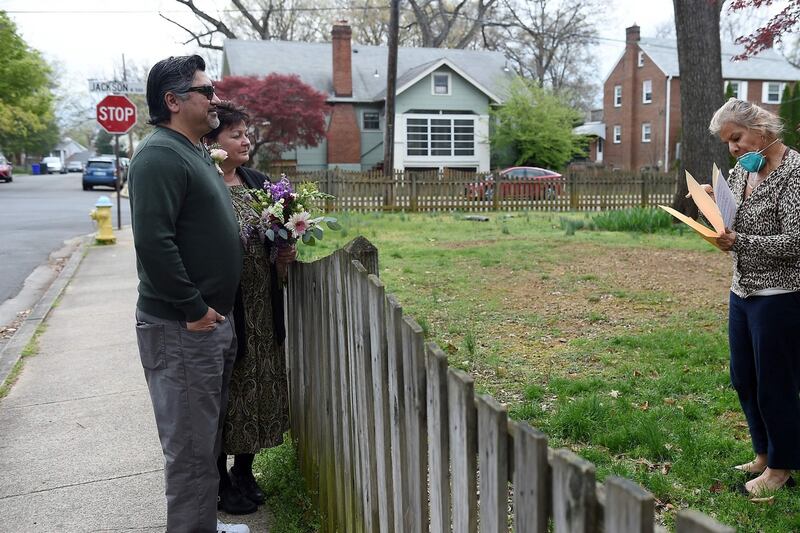As normal life and politics continued to hover in a strange, suspended state this week in Washington, for some residents life was more challenging than others.
Washington DC was one of the first cities in the United States to introduce restrictions to combat coronavirus, with mayor Muriel Bowser ordering businesses and schools to close in mid-March.
With most residents confined to their homes, I took a drive across the city, hoping to catch a final glimpse of the cherry blossoms now in their last bloom. Driving past the iconic monuments on the National Mall near the White House, the backdrop to so many movie scenes, I crossed the river to Anacostia – and to another world.
Washington DC has long exemplified the racial divisions of American society.
Historically, the city has one of the largest African-American populations in the country, though it has dropped from about 70 per cent in the 1970s, to just under 50 per cent.
Wealth disparities
Its strong black heritage has resulted in a rich African-American tradition – from Howard University, one of the oldest black colleges in the nation, to the music venues on U-Street that have hosted jazz greats such as Duke Ellington.
But it has also experienced the deep structural wealth inequality that has marred American society for decades.
Like many American cities, the wealth disparities can be seen in the iconography of the city.
Washington is divided into four quadrants, with the US Capitol at the nexus of the grid. More than 50 years since Martin Luther King delivered his "I have a dream" speech in the city, segregation is still a reality in Washington. The residents of the overwhelmingly white northwest rarely visit the majority black lower-income areas, despite pockets of gentrification near Capitol Hill and the wharf area.
Driving into the southeastern neighbourhood of Anacostia, the iconic dome of the US Capitol in the rearview mirror, the urban landscape changes. Along Malcolm X Boulevard farther south, most of the shops are closed, like much of the city.
Small groups of men and younger people are gathered on grassy spaces, near the playgrounds, now locked due to the virus.
The streetscape is reminiscent of areas of Detroit or Memphis. While many of the wooden houses lining the streets are substantial, they are interrupted by empty lots. Many have boarded-up windows.
Outside the Eagle Academy school, a small group has gathered.
The school is one of several across Washington serving school meals during the lockdown.
Four young girls have just picked up their brown paper lunch bags.
The oldest, her hair beautifully dreadlocked, has already started munching on an apple. She tells me she lives nearby, pointing to the block of flats up the hill.
Inside the cafeteria, four staff members are serving meals. "We provide breakfast and lunch," says Angelo Murray, pulling down his mask as he speaks to me from a distance in the empty hall. The menu varies day to day, he explains. "Yesterday we had chicken legs, garlic and broccoli – breakfast usually includes sliced apple."
Does he worry about coming to work in the current climate? “A lot of our parents just don’t have the food to give their kids for two or three weeks,” he says of the African-American community he serves. “They need this.”
His view is borne out by the data.
Alarming figures this week from states and cities show across the country show that African-Americans are disproportionately affected by the coronavirus, also known as Covid-19, and dying at a higher rate.
Death
In Louisiana where African-Americans represent 32 per cent of the population, they have accounted for 70 per cent of coronavirus death. Similar trends have been reported in Illinois and Michigan.
The nation's top immunologist, Anthony Fauci, addressed the issue this week, explaining how those with underlying health conditions and minimal access to healthcare are disproportionately affected. "Health disparities have always existed for the African-American community," he said. The coronavirus pandemic was "shining a bright light on how unacceptable that is".
As I take my leave from Angelo, I head back towards the city. Donald Trump is due to give his coronavirus briefing in a few hours from the White House, just a few miles from the community I have left. I wonder how many will tune in. As the White House glints in the sunshine, I am struck, not by this great symbol of American power and leadership, but by the huge gulf between the president and the citizens he is supposed to represent in these troubled times.













